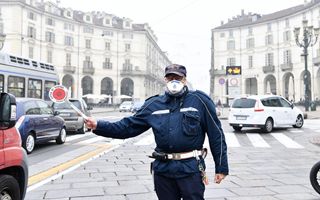(Finance) – Theurban pollution continues to represent one serious environmental threat for the Health in the EU, warns a report published today by European Court of Auditors (ECA). The city Europeans they are too noisy and air pollution remains too high, despite improvements. This is of particular concern, auditors say, as the EU and its member states will have to step up their efforts to meet tougher standards in the years to come.
Three quarters of EU citizens live in urban areas and are therefore particularly exposed to air and noise pollution. Air pollution kills at least 250,000 people every year in Europe, according to the European Environment Agency. Additionally, long-term exposure to excessive levels of noise can have negative health effectssuch as sleep disorders, anxiety, cognitive impairment and mental health problems, resulting in 48,000 new cases of heart disease and 12,000 premature deaths in Europe every year. The EU introduced norms to protect its 450 million citizens from air and noise pollution. The European Commission also claims to have mobilised 46.4 billion euros for 2014-2020 e 185.5 billion euros for 2021-2027 to support clean air goals.
“There have been positive developments in the fight against urban pollution. However, it would be a big mistake to rest on our laurels – he said Klaus-Heiner LehneECA Audit Member –.The EU and its Member States must realize that ambitious targets cannot be achieved without significant additional effort.”
THE auditors recognize that air quality has improved overall in the EU. However, they warn that theair pollutionparticularly the concentration of nitrogen dioxide (NO2) caused by cars and trucks, remains a major problem. In 2022, 10 Member States still exceeded the current EU limit for nitrogen dioxide (NO2). As EU air quality standards will soon become stricter, EU cities will have to increase their efforts to meet the new EU standards if they want to get closer to the World Health Organization (WHO) recommendations.
The noise it is the other side of urban pollution, and is often overlooked. The reviewers conclude that assessing progress in reducing this type of pollution in the EU is virtually impossible. Most Member States have gaps and delays in noise monitoring, meaning that a trend cannot be established. The data suggests that the 2030 zero-pollution noise target of a 30% reduction in the number of people harmed by transport noise is unlikely to be achieved. Estimates show it will decline by 19% in a best-case scenario and, in a worst-case scenario, could even increase by 3% by 2030.
The fact is that the city they have difficulty dealing effectively with air and noise pollution. The reasons for this range from poor coordination on the part of the authorities to the questionable effectiveness of the measures, not to mention local resistance against them. Take, for example, the areas green (“axes”), where pedestrians and cyclists have the right of way over cars. Reviewers found they benefit locals but worsen air quality and noise levels in surrounding streets. Likewise, low-emission zones, which help reduce air and noise pollution, are an increasingly sensitive issue. For example, attempts to introduce them in Barcelona and Krakow encountered legal challenges on grounds of discrimination or restrictions on free movement, which led to the measure being reduced or postponed.
The Court of Auditors also found that the infringement procedure of the European Commission is long and not always effective in ensuring that audited cities comply with EU rules on air and noise pollution.
